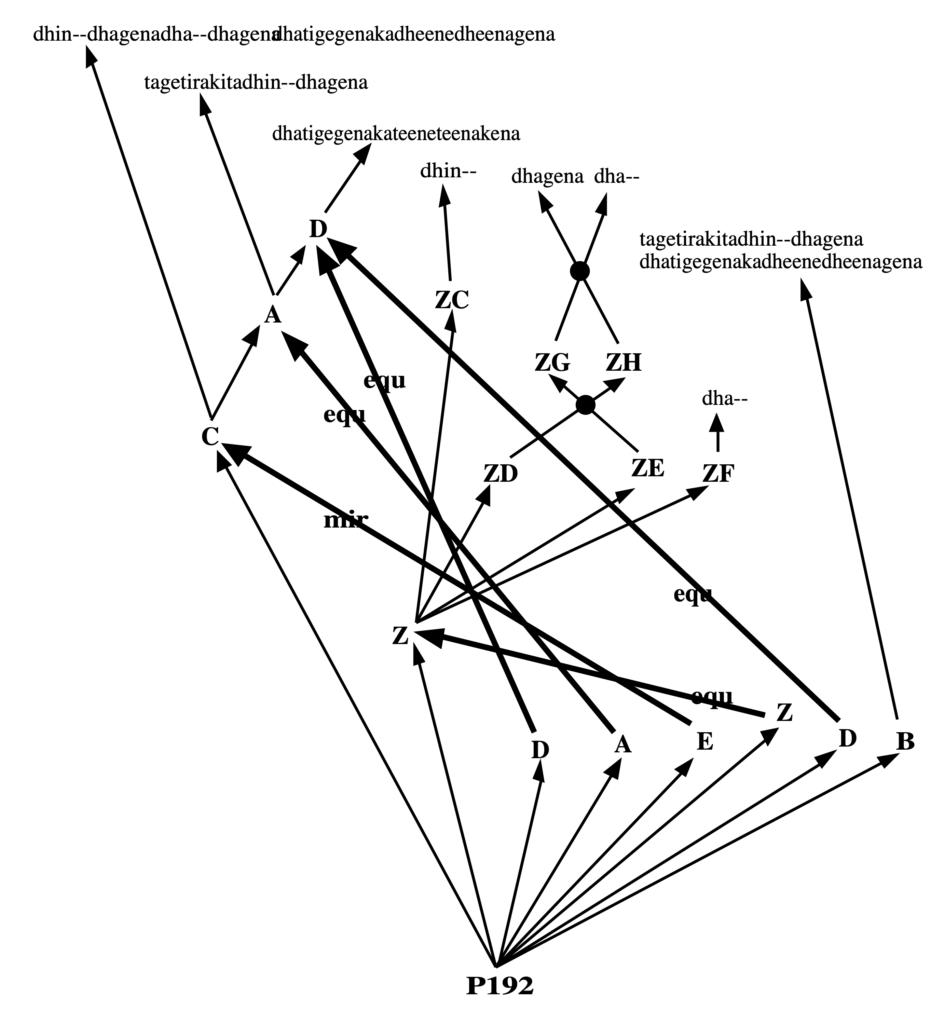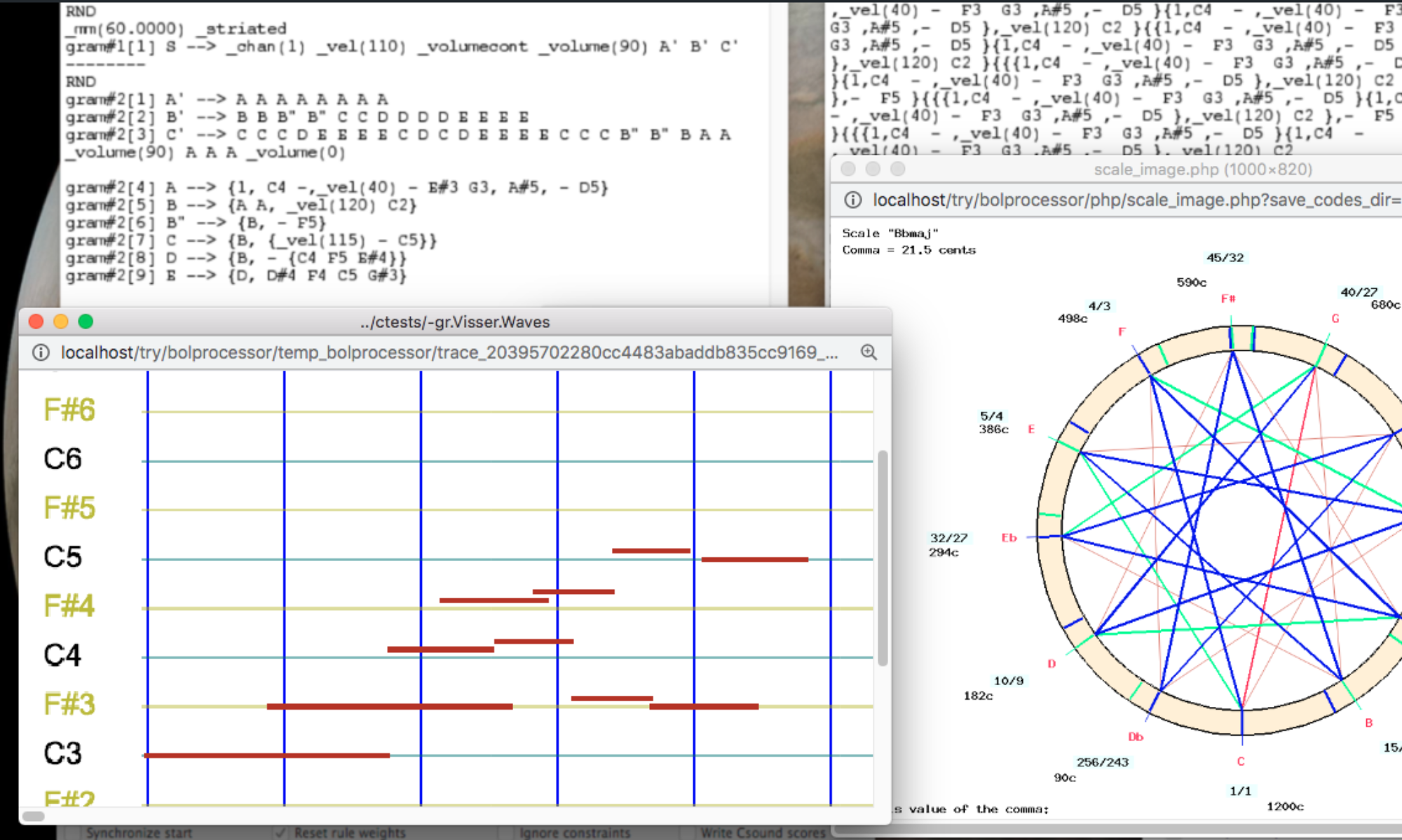Bernard Bel
Pattern grammars in formal representations of musical structures. 11th International Joint Conference on Artificial Intelligence, Workshop on AI & Music, 20 August 1989, p.113-42
Abstract
This paper introduces several formal models of pattern representation in music. Polyvalent multimodal grammars describe partially overlapping sound events as found in polyphonic structures. Bol Processor grammars are characterisations of sequential events in terms of substring repetitions, homomorphisms, etc. Parsing techniques, stochastic production and recent developments of BP grammars are briefly described.
Excerpts of an AI review of this paper (June 2025)
Summary

This paper presents a thorough exploration of pattern grammars and their applicability to musical structures, specifically focusing on polyphonic and homophonic aspects. It introduces Polymodal Multivalent Grammars (PMGs), demonstrates how temporal and structural relationships in music can be modeled using a lattice of time relations, and draws parallels with formal language theory. The discussion also extends to Bol Processor (BP) grammars, offering insights into pattern rules, membership tests, and stochastic production for music generation and analysis. The work’s illustrations, which delve into North Indian tabla sequences and Western musical examples (notably Bach), add concrete demonstrations of how these grammars can capture and replicate real-world musical practices.
Major Strengths
Methodological Clarity and Formal Rigor
- The paper provides a clear formal framework for understanding music as an algorithmic process. This is exemplified by precise definitions of pattern grammars, rewriting rules, and homomorphisms.
- The use of mathematical notation (e.g., partial orders, lattices, homomorphisms) lends a rigorous backing to the arguments.
Comprehensive Treatment of Time Overlaps
- The conceptual separation of out-time and in-time structures, and the ensuing treatment of 13 distinct possible temporal relations, is notable. This approach tackles many of the complexities found in polyphonic and partially overlapping musical events.
Insightful Practical Applications
- Educating readers on how grammars can be used for music composition, improvisatory modeling, and performance practice is highly valuable.
- The examples of North Indian tabla repertoires and Bach’s polyphonic compositions concretely illustrate the potential breadth of these models.
Contribution to Epistemological and Analytical Discourse
- By addressing existing debates (e.g., parallels with linguistic theory, ethnomusicological criticisms, and generative approaches), the paper bridges a gap between traditional analytical methods and computational modeling.
General Comments
This work makes a solid theoretical contribution by bringing together formal language theory and concise examples of musical structures. It is equally relevant to researchers in computational musicology, ethnomusicology, and music theory. The paper may also be of broader interest to anyone studying the intersection of artificial intelligence and creative processes. Overall, its strengths lie in its theoretical depth, its range of illustrative applications, and its attempts to unify diverse perspectives under a single formal modeling framework for musical representation.
Skip to PDF content